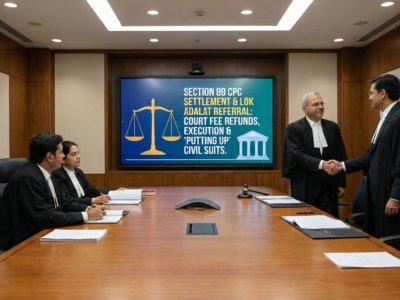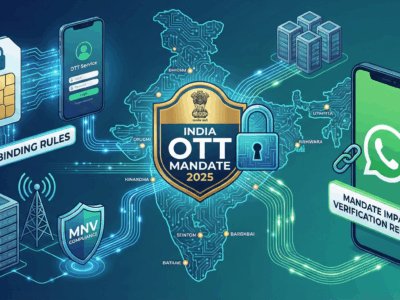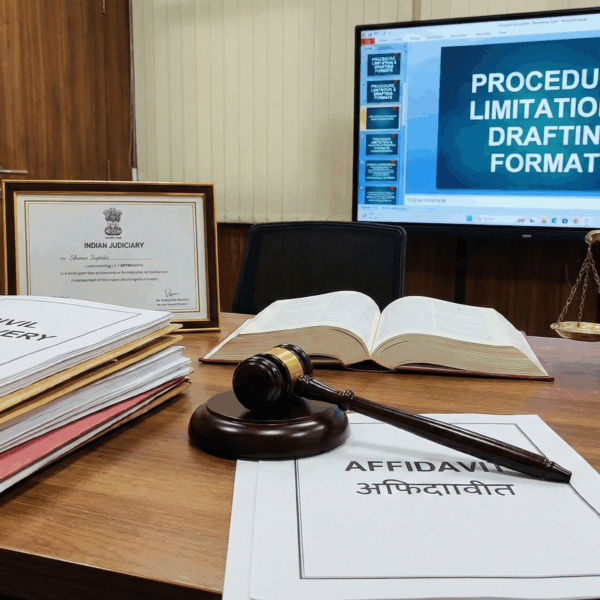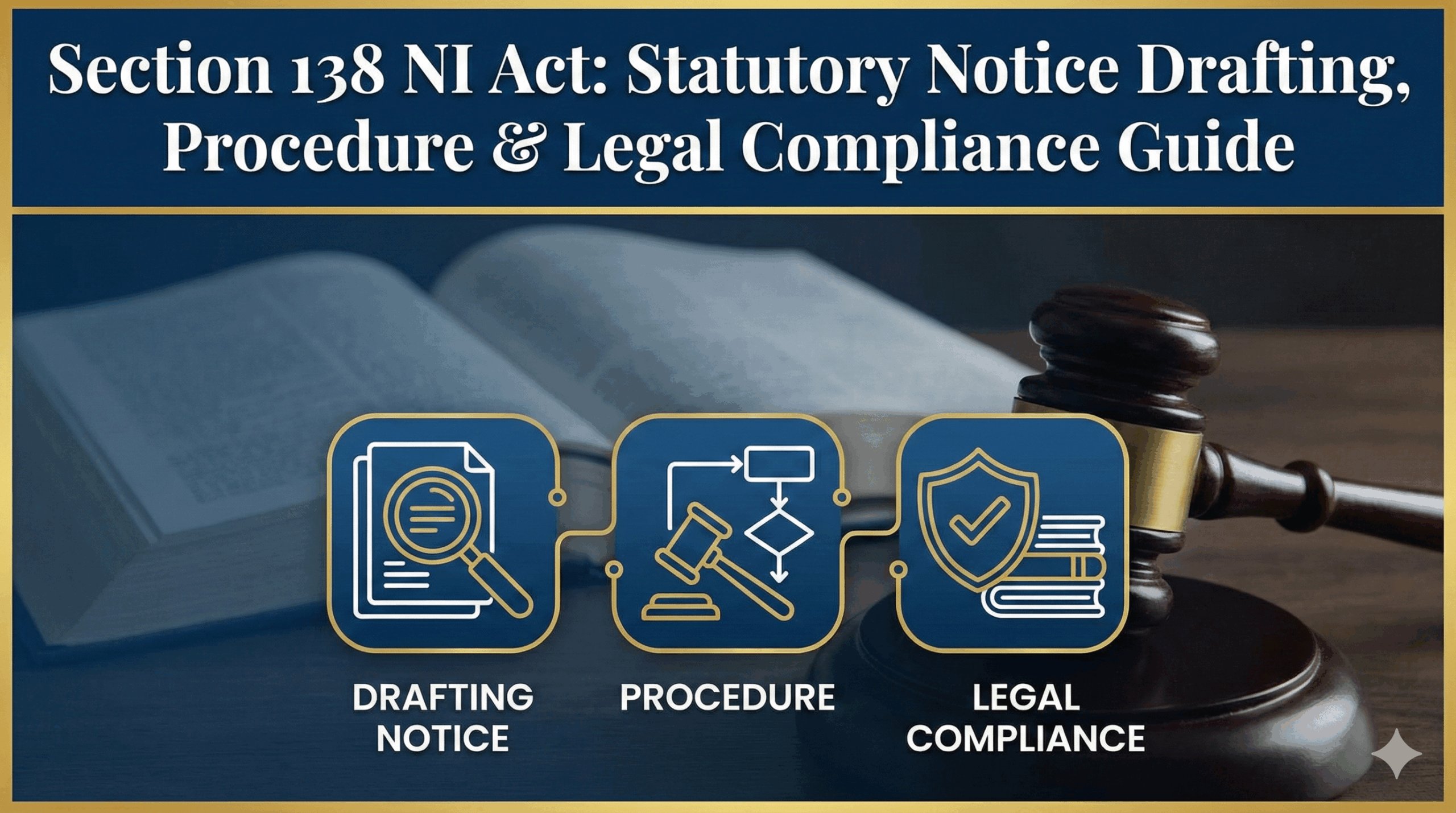With financial cybercrime in India soaring past ₹36,000 crores, the Government has launched the e-Zero FIR system—a powerful new weapon for victims of high-value fraud. This guide provides a crucial, step-by-step walkthrough of the new process, from immediate reporting on the 1930 helpline and NCRP portal to the critical police validation steps, helping you fight back and reclaim what’s yours.
Fighting Back Against Cyber Fraud
An interactive guide to the new e-Zero FIR system for victims of high-value financial crimes.
Learn How to File a ComplaintThe Scale of the Crisis
The digital economy's growth has been mirrored by a staggering rise in financial cybercrime, creating a national crisis that demands a modernised response.
The Victim's Ordeal: Jurisdictional Paralysis
Historically, victims of borderless cybercrime faced a "second ordeal": being turned away by police due to jurisdictional confusion, causing critical delays and lost funds.
The Old Way: A Maze of Frustration
1. Victim Approaches Local Police
Distressed and seeking help immediately after the fraud.
2. Jurisdictional Refusal
Turned away because the "crime occurred elsewhere."
3. Critical "Golden Hour" Lost
Criminals transfer funds while victim searches for the "right" police station.
The New Way: Automated & Swift
1. Victim Reports Online (NCRP/1930)
From anywhere, at any time, initiating an immediate response.
2. Automatic e-Zero FIR Generated
For frauds > ₹10 lakh, a case is registered instantly without human delay.
3. Immediate Investigation Begins
Police and banks act within the "golden hour" to freeze accounts and trace criminals.
How It Works: The Legal & Tech Backbone
The e-Zero FIR system is built on a solid legal foundation and powered by an integrated national technology infrastructure.
Legal Evolution: From Paper to Pixels
First Information Report (FIR)
The traditional, mandatory first step to start a police investigation for serious crimes.
Zero FIR (Post-Nirbhaya)
Allowed filing an FIR at any police station, regardless of jurisdiction, to prevent delays. It was then transferred manually.
e-Zero FIR (BNSS, 2023)
The digital evolution. An FIR is automatically generated from an online complaint and electronically transferred, legally sanctioned by Section 173 of the Bharatiya Nagarik Suraksha Sanhita (BNSS), 2023.
The Integrated Digital Backbone
1. Intake Layer
Victim reports via NCRP Portal or 1930 Helpline.
2. Processing Layer
Delhi Police e-FIR system auto-generates e-Zero FIR.
3. Distribution Layer
CCTNS network routes FIR to the correct local police station.
A Step-by-Step Guide for Victims
Follow these steps meticulously to maximize your chances of recovering funds and achieving justice.
The Golden Hour
Phase 1: Immediate Reporting is CRITICAL
The first 60 minutes are crucial. Acting fast dramatically increases the chance of freezing your stolen money. You have two options:
Method 1: Dial 1930
Fastest way to alert banks. An operator will create a ticket. You'll get an SMS with an acknowledgement number to complete the report online later.
Method 2: Use NCRP Portal
Go to cybercrime.gov.in. This is the most detailed method, allowing you to upload evidence directly.
Pre-Complaint Checklist
Gather this information *before* you start the online complaint to ensure accuracy during a stressful time.
| Category | Information/Documents to Prepare |
|---|---|
| Transaction Details | For each fraudulent transaction: Victim's Bank/Wallet Name, Account Number, Transaction ID/UTR, Amount, Date, and Time. |
| Suspect Details | Fraudster's Name, Mobile Number(s), Email(s), Website/URL, Social Media Handles, UPI ID(s), if known. |
| Evidence for Upload | Clear screenshots of: Bank/Wallet statements, fraudulent messages (SMS, WhatsApp), fake website URLs, call logs. |
The Mandatory Step
Phase 2: The 72-Hour Validation Mandate
While the FIR is generated automatically, the law requires one final physical step from you:
- Your local Cyber Police station will contact you after receiving the e-Zero FIR.
- You **MUST** visit the station within **3 days (72 hours)**.
- The purpose is to **sign a printed copy** of the FIR, making it legally complete.
- CRITICAL WARNING: If the FIR remains unsigned after **30 days**, it is liable to be **withdrawn and closed**, regardless of the amount lost.
Behind the Scenes: A Multi-Agency Response
While you complete the reporting, a parallel workflow is instantly triggered across law enforcement and financial institutions.
Immediate Police Action
The e-Zero FIR is a legal trigger. Police begin investigation without waiting for your signature. Actions include:
- Freezing suspect financial accounts.
- Requesting call detail records (CDRs) from telcos.
- Securing digital evidence like IP logs.
Financial Frontline Response
The 1930/NCRP complaint creates a ticket on the CFCFRMS platform, alerting nodal officers at banks to:
- Place an immediate "lien" or hold on funds.
- Trace the money trail as it moves between banks.
- Collaborate to block funds down the chain.
Data & Triage: The Bigger Picture
Understanding the scale of the problem and how law enforcement prioritizes cases.
Cyber Fraud Trends in India
Investigative Triage Protocol
Delhi Police delegates cases based on the fraud amount. Use the slider to see who handles the case.
Critical Analysis: Potential & Pitfalls
While a major step forward, the system has limitations and challenges that need to be addressed for a successful national rollout.
The ₹10 Lakh Threshold
The current focus on high-value fraud is pragmatic for a pilot but creates a two-tiered system. The vast majority of victims with smaller, yet devastating, losses are excluded from automated FIRs, raising questions of equity.
The Digital-Physical Paradox
The mandatory 72-hour physical visit to sign the FIR reintroduces friction into a digital-first process. This "last-mile problem" can be a significant hurdle for the elderly, ill, or those traveling.
National Rollout Hurdles
Scaling from the Delhi pilot faces challenges: lack of awareness among police, technological disparities between states, and ensuring uniform CCTNS integration and training nationwide.
Conclusion & The Path Forward
Key Takeaways for Victims
- Act with Urgency: Call 1930 immediately, then file a detailed report on the NCRP portal.
- Be Prepared: Use the checklist to gather all evidence and details beforehand.
- Comply with the Mandate: Do not miss the 72-hour deadline to visit the police station and sign the FIR.
- Maintain Records: Keep your acknowledgement number and a log of all communications.
Recommendations for Policymakers
- Enable Digital Signatures: Amend laws to allow for secure remote authentication to close the digital loop.
- Lower the Threshold: Create a roadmap to systematically lower the ₹10 lakh limit, democratizing access.
- Invest in Training: Ensure nationwide police forces are trained on the new system and its legal mandate.
- Accelerate API Integration: Fast-track direct API links between banks and the NCRP for real-time fund freezing.








